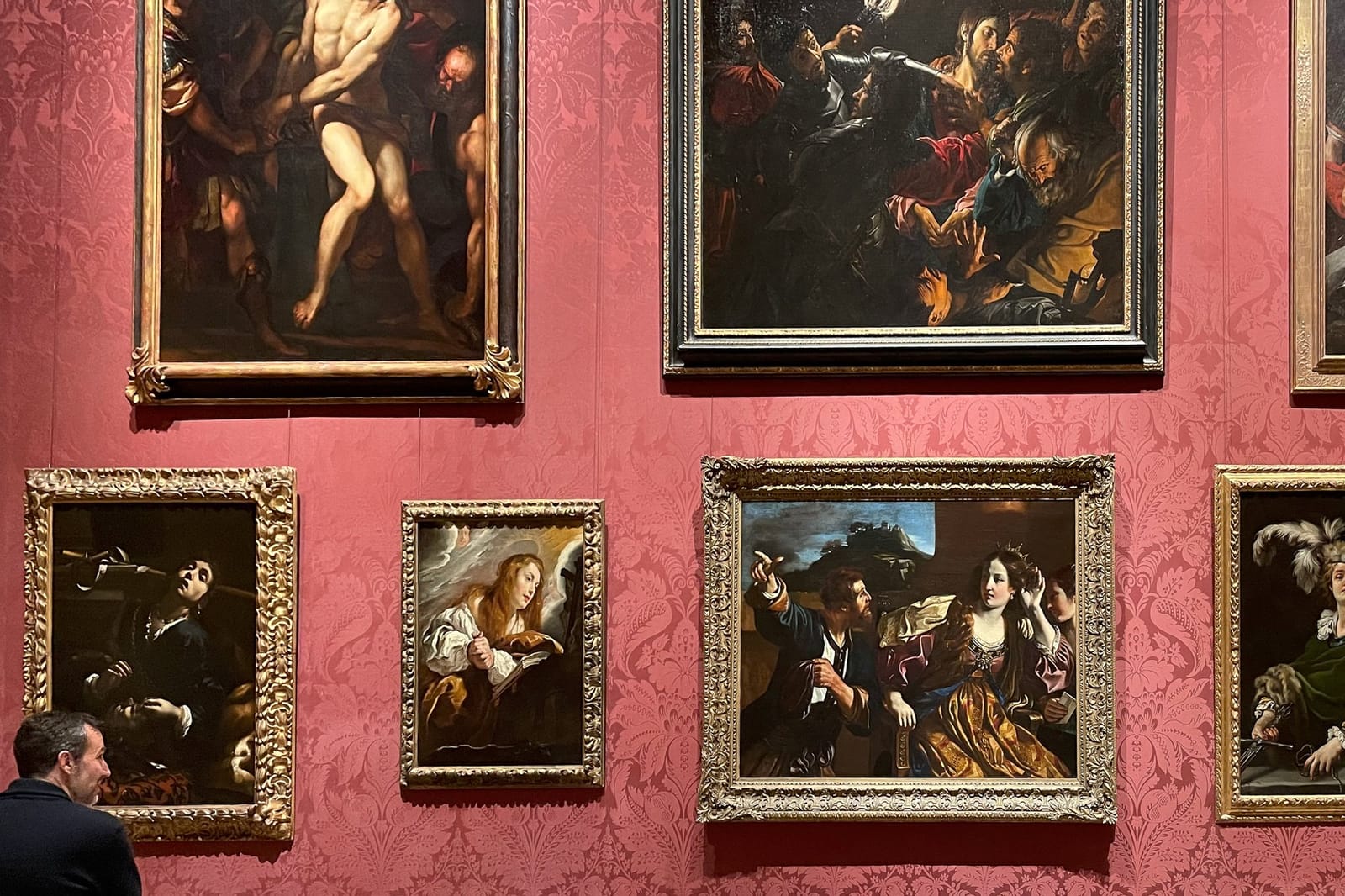Boston. Eleven years sober and another year older. Spent ten hours wandering the galleries of the Museum of Fine Art with C., which is my favorite thing to do on this planet.
I fell in love with John Singer Sargent for the first time, I savored the tranquil light in Vilhelm Hammershøi’s Woman in an Interior, and I admired the paintings of François Boucher, who disliked nature because it was “too green and badly lit.” As for natural lighting, I’ve always appreciated the phrase ‘civil twilight,’ which describes the moment the sun sinks 6° below the horizon and perhaps the moment we’re living through today.
When I came across an artist whose placard mentioned “his untimely death at the age of 35,” I resisted a mad urge to look up the cause. Why do I crave this detail? Does it come from a decent place of human curiosity, or is it rank rubbernecking?
I love Catholic art. If I take a mental step back, it looks like Europe was absolutely out of its mind: little winged people flying around the heads of men who beat their chests and stare at the sky, zombies awakening after being nailed to posts, and so many elaborate portraits of breastfeeding. Or consider Francesco del Cairo’s portrait of Herodias with Saint John the Baptist’s decapitated head, “swooning in ecstasy as she mutilates the tongue that spoke against her.”
In the African wing, I was struck by a Kongo nkisi nkonde, a power figure that served as a healer of conflicts, its body studded with nails, each signifying a problem or a vow. “The figure’s open mouth suggests the uttering of judgment, and the abdomen and eyes contain mirrors to deflect danger.” I’m determined to work this detail into the new story I’m writing.





